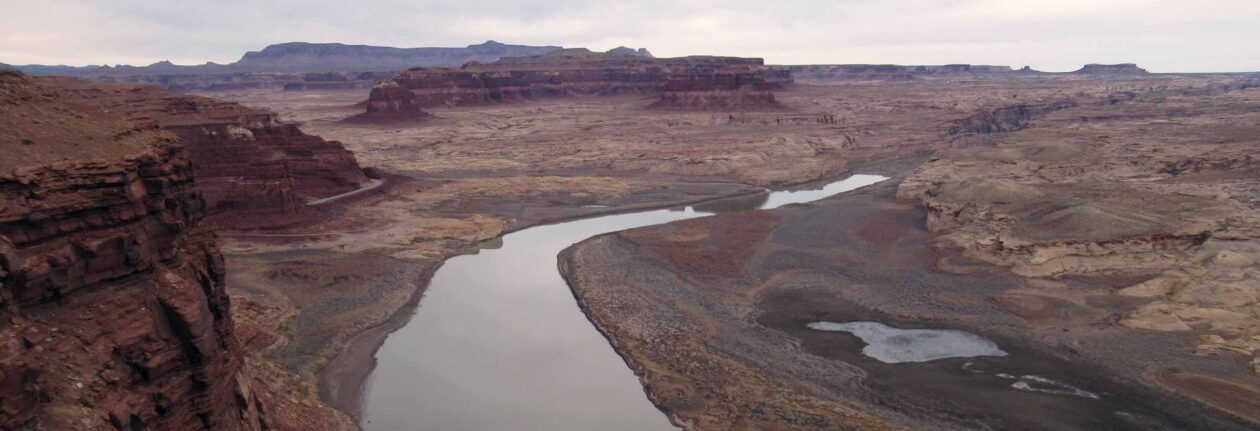Ho Chi Minh City (Saigon), Vietnam
I woke up today and got ready; then I walked downstairs to enjoy a breakfast (eggs, loaf of bread, a banana, slices of dragon fruit, and some hot tea) and then join the tour I had scheduled the previous day to the Cu Chi Tunnels. One of the tour operators guided myself and several other customers across the street and across the park, where we waited for our bus to come pick us up. The bus came at around 09:00 and we all got on board; the bus then made several other stops to collect passengers until it was full; we then drove toward the Cu Chi Tunnels. Along the way our tour guide gave us information about the tunnels, what we would see and do, and he told us how terrible the Agent Orange used by the enemy had been – how it made the jungles desolate for over twenty years and the effects it had on people and their offspring for generations to come due to drinking contaminated water. After traveling for an hour, we stopped for a break at a art production facility. The facility had a large room that reminded me of a sweatshop, with many people sitting at rows of tables, producing panels with familiar and more original works of art on them to be sold to tourists; the tour guide had explained that a portion of the money made at this facility would go to helping victims of Agent Orange and there were some of the victims working and hanging around inside the facility; a lot of the handy work was quite beautiful and I walked around trying to identify the original painters of the more familiar artworks that had been copied (it is quite possible I would’ve bought something here if I had not committed myself to not buying any souvenirs during my travels – at least not until the end when transporting these items may be more feasible). After that short break, we then loaded back up on to the bus and headed to the Cu Chi Tunnels, passing by rubber tree plantation along the way where we were able to observe workers collecting the sap from the trees.
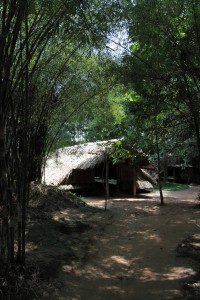
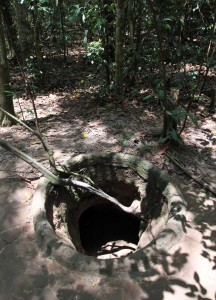
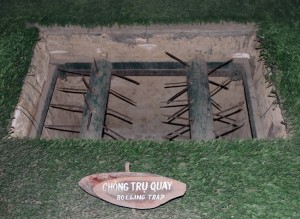
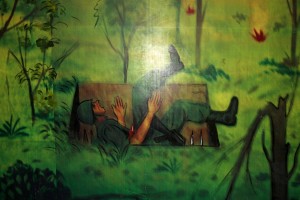
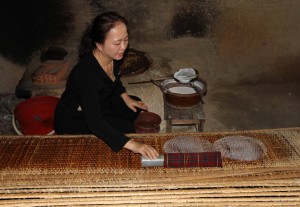
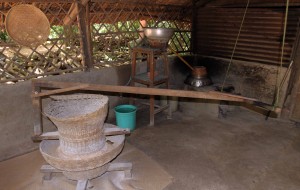
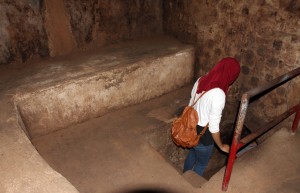
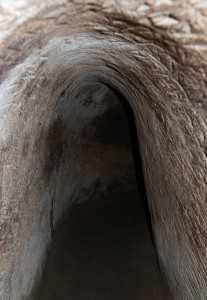
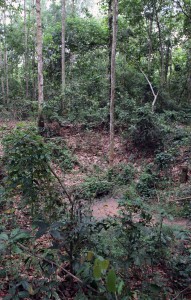
In roughly another hour on the road, we reached our destination. The tour guide bought all the tickets for us from the money he collected from each of the passengers on the bus and then we entered in to the park. The Cu Chi Tunnels were part of an enormous tunnel system built by the Viet Cong during the war (the overall tunnel system was about 250 kilometers long) and the Viet Cong used the Cu Chi Tunnels as their base of operations during the Tet Offensive; currently about 121 kilometers have been preserved by the Vietnamese government and in this park visitors can enter a section of the original tunnels. Our tour guide walked us around the trails through the jungle (which is all fairly recent growth from the last twenty years, since Agent Orange had decimated all the previous flora and nothing began to grow until the early 1990s), first taking us past an example of a concealed pit with bamboo spikes at the bottom, which the Viet Cong used to deploy to kill American GIs. Next we visited an old opening to the tunnel system that was located in an inactive stream bed (the wood door had rotted away that used to cover the entrance and that door would then be covered with wet mud to camouflage it from the enemy (i.e. me)); we also walked by another, round opening to the tunnels. Then we visited the remains of a United States Army tank that was destroyed by a mine during the war in 1970. We then looked at more examples of the traps the Viet Cong used to place in the jungle to kill American GIs, many involving long, narrow, sharp spikes (such as “clipping armpit trap”, “rolling trap”, “window trap”, “folding chair trap”, “fish trap”, “seesaw trap”, etc.). We then walked to the firing range and concession area right next to it; originally I had planned to fire an AK-47 at this range, but we were told the ammunition is old and unreliable (apparently Vietnam is not able to replenish these rounds – embargo?) and we would not be able to fire the weapon on the automatic setting; also, due to the loud and frequent “bangs”, as well as the lack of adequate hearing protection, I decided to skip this activity and distanced myself away from the deafening noise; so I walked to a nearby exhibit with a demonstrator showing how rice paper and rice wine is traditionally made; I also saw a few American Vietnam Veterans (one with a veteran’s hat announcing his presence) taking a tour of the park as well (I wonder how it feels to be back after all these years). It then became time to move on, so we walked to the visitors’ entrance to the Cu Chi Tunnels, passing by a crater left in the jungle by a B-52. We then reached the entrance and most people on the tour decided to enter inside; it was hot, stuffy, and narrow, but at least electric lighting had been installed to allow us to see most of the way; along the route of the tunnel there are exits every ten meters and the visitor portion (which are tour guide repeatedly told us was genuine . . . hmm) went for fifty meters total (all the other passages, say to the two lower levels must have been blocked?); I crawled through the fifty meters worth of tunnela nd then came out the other end with mud and lots of sweat on my clothes (it was really hot down there). Next, we walked to an opening along the tunnel that a sniper would’ve used; it was a tight entrance/exit and was covered with a piece of wood and dead leaves; after taking the necessary photos at that spot, we then walked to one of the many shelters that has a video for visitors to watch (there were a few shelters for this purpose, I think each one may contain a different narrated language) that explains the history of the tunnels and shows some of the local heroes who were awarded for killing many Americans. After that propaganda film, we then walked back to the bus and loaded up inside. We hit the road and in about an hour we were back where we started in Ho Chi Minh City (makes me wonder how much of a detour the art sweatshop is since it took two hours to get to the tunnels, but I suppose it could’ve been caused by morning traffic).
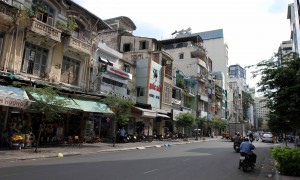
I exited the bus near Ben Thanh Market and then walked back to the hostel to find a place to eat. I found a place near the hostel and had Kow Owp Sapa-lot (fried rice with shrimp and pineapple baked in a whole pineapple), fried chicken with ginger, and a papaya shake. After that afternoon meal, I walked back to my hostel and relaxed inside my room while frustratingly researching the next few legs of my journey (trying to find low cost airline tickets that don’t have overnight layovers in places I’ve already been to) – I also read the final results for Scotland’s vote for independence, which I found very disappointing. Oh well. As the hours slipped by, I grew hungry; so I left the hostel and walked to the nearby McDonalds to get a Big Mac and french fries. After that snack, I walked back to the hostel and went to sleep.
